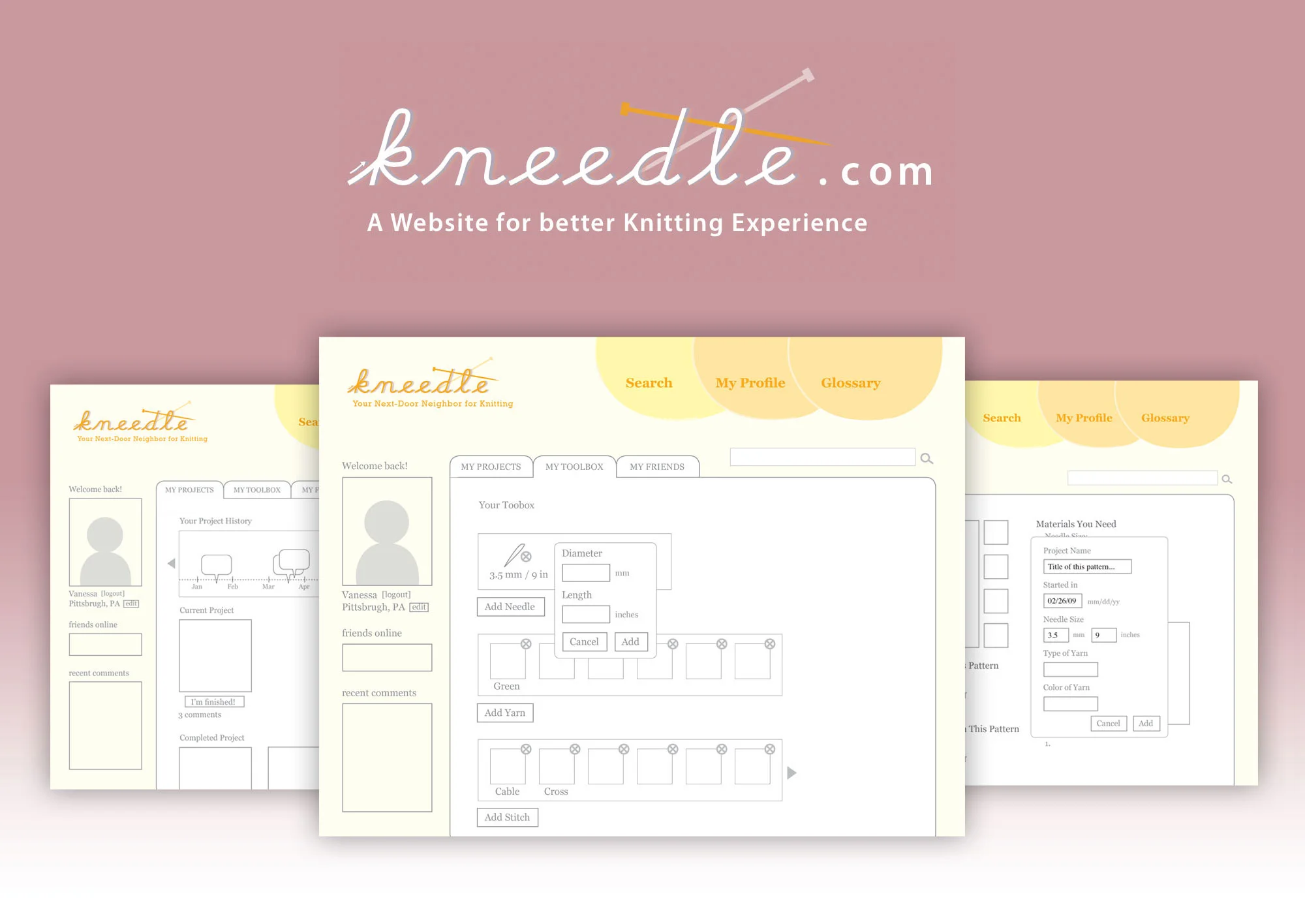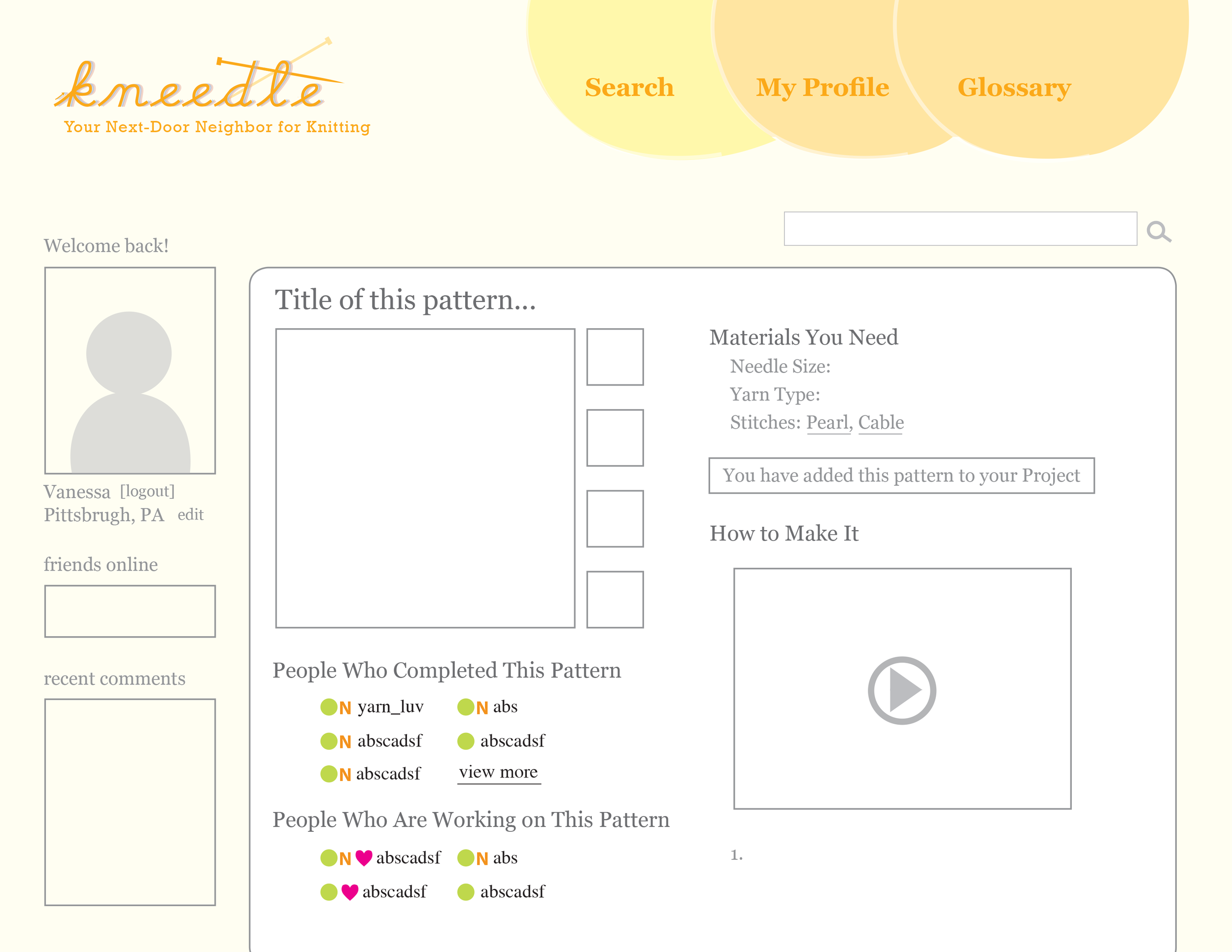Project Overview
The Kneedle.com project is designed to help knitters of all levels to find the perfect resource in both online and real world formats. It brings together the best of those two types of resources, combining human interaction and personal help/advice from other knitters with the flexibility and immediacy of the internet.
The aim was to create a web community that will be the “next-door neighbor who is available 24/7 and is more knowledgeable” than the user so that we can help knitters develop their knitting skills.
This concept project was created as part of Carnegie Mellon University’s Basic Interaction Design class.
Research
Real Life Observations
In this part of our research, we observed real knitters of varying skills around Pittsburgh, and asked them about how they find research patterns, what they use, and what do they like or dislike about the process of finding knitting patterns.
Online Surveys
In order to get input from a wider variety of knitters, we decided to post surveys on two knitting community forums (Knittinghelp.com and Ravelry) with several questions.
Competitive Analysis
| Website | Positive | Negative |
| Knittingonthenet.com | + None | - Lists patterns without image
- Not broken up by skill level - Instructions are confusing - No profile page - Not personalized |
| Knittinghelp.com | + Video Instructions
+ Glossary + Skill Rating |
- Poor layout for search and pattern tabs
- Limited amount of patterns available - Mostly an instructional website |
| Ravelry.com | + Wide range of search filters
+ Wide range of information + Good community |
- Requires an invitation to join
- Difficulty slider doesn't directly translate (not meaningful) - Complex interface - Aimed at people who are already dedicated knitters |
Synthesis
Personas
We created two personas (novice knitter and advanced knitter) and drafted scenarios that summed up our research.
Model
After each round of researching we developed a model of what the what the users needed. We kept a list of current needs and how they could be fulfilled and updated them based on each round.
Pattern Finding
After feed back on the project we started to dig deeper into the process that knitters use to make patterns. Based on the feed back we got from our bricks and mortar research and the responses from the knitting websites we discovered that making the pattern is too a process that is integrated with how the user found the pattern.
Guiding Princples
• Every knitter no matter how advanced is still a learner.
• Knitting is a ‘solitary’ activity.
• Knitters prefer to learn and get help in person above all
Wireframes












